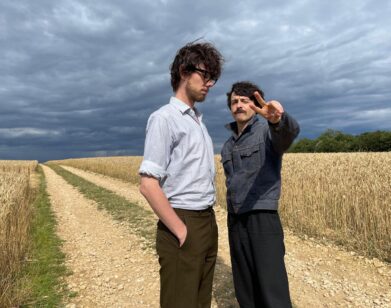The Star Makers
Jon Voight, Glenn Close, Robert Redford, Christopher Walken, Diane Lane, and Robert Duvall are just a few of the actors who owe their film careers to Marion Dougherty. One of the first independent casting directors, Dougherty had a hand in shaping the gritty, off-kilter, distinctly New York aesthetic of late-’60s and ’70s American cinema. Collaborating frequently with directors such as George Roy Hill and Woody Allen, Dougherty and her Hollywood-based counterpart Lynn Stalmaster are the reason the credit “casting by” exists at all. “I grew up loving movies and don’t understand how I never, ever thought of the casting director,” says Tom Donahue of the impetus behind his new documentary, Casting By, which honors Dougherty.
As the studio system in which actors were kept under contract crumbled, Dougherty and Stalmaster changed the casting process from “Who on our roster has played a thief before?” to one of deliberation and discoveries. “I have found actors in the most remote places,” recalls the 86-year-old Stalmaster. “‘Why did you go to Rome to cast the Russian boy in Fiddler on the Roof?’—I had a feeling, and, sure enough, the Russian boy was in Rome.” The idea, emphasizes Stalmaster, is “to fulfill the director’s vision.”
Dougherty and Stalmaster would often scour the stages of New York for new actors—a tactic that introduced the world to Al Pacino, Dustin Hoffman, and Christopher Reeve—and fight for their favorites. “I think the streets of New York and going through all that struggle and that climb up presents a kind of fiber,” muses Stalmaster. One of Stalmaster’s favorite memories is his relationship with the late Christopher Reeve. “I had seen him on Broadway—I think it was with Audrey Hepburn. I was totally captured, not only by his talent, but by him as a human being,” says Stalmaster. “I cast him in his first small role in a film and when I was called in to cast Superman (1978), Christopher Reeve flashed into my mind… we became very good friends.”
Both Dougherty and Stalmaster got their start casting television shows in the early 1950s: Dougherty on Kraft Television Theater; Stalmaster on The Lone Wolf the in the 1950s. Highlights of their resumés include The Thomas Crown Affair (1968), Harold and Maude (1971), The Last Detail (1973), The Graduate (1967), and Tootsie (1982) for Stalmaster; and Midnight Cowboy (1969), Butch Cassidy and the Sundance Kid (1969), Batman (1982), Full Metal Jacket (1987), and Lethal Weapon (1987) for Dougherty. In spite of their parallel careers, the two did not meet until the 1990s, long into their careers. “I was aware of her talent even in the 1950s,” Stalmaster reassures us.
Marion’s legacy continues through her former assistants, many of whom are the preeminent casting directors of today and appear in Donahue’s documentary. A particularly good example is Woody Allen’s long-time collaborator Juliet Taylor, who inherited Allen when Dougherty moved to California. “Marion Dougherty should be lauded for her perception and her selection of these women,” says Stalmaster. “Casting is alive and well in this new millennium… I don’t think it’s declined at all.”
Though she retired in 1999 and died in 2011, Dougherty’s high-profile Hollywood fans are out in full force in Donahue’s film. “More than 90 percent of directing a picture is the right casting,” says Martin Scorsese as the film opens, and as Stalmaster tells us, “There was never a false note in Marion’s casting.”
CASTING BY WILL PREMIERE ON HBO ON MONDAY, AUGUST 5.







